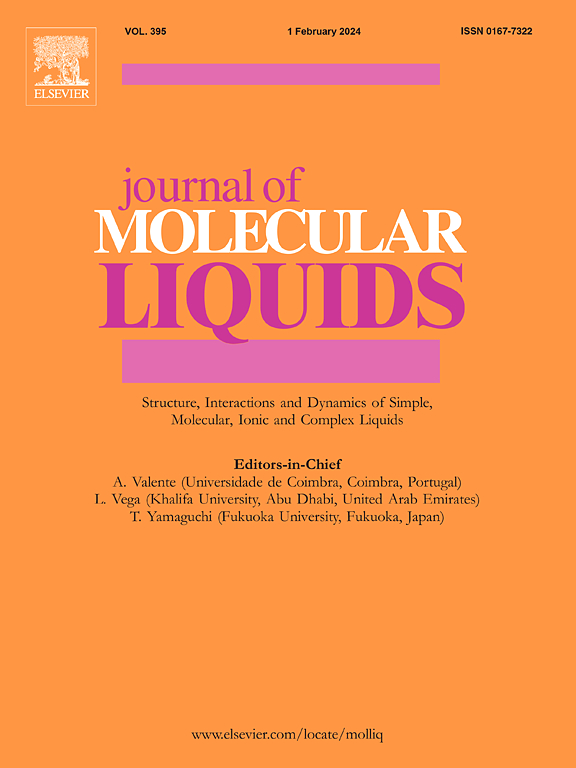研究强碱水溶液中的相图-离子导电等温线关系:锂、钠和钾氢氧化物
IF 5.3
2区 化学
Q2 CHEMISTRY, PHYSICAL
引用次数: 0
摘要
本文章由计算机程序翻译,如有差异,请以英文原文为准。
Investigating the phase diagram-ionic conductivity isotherms relationship in aqueous solutions of strong bases: Lithium, sodium and potassium hydroxides
This study investigates the intricate link between solid–liquid phase diagram features and ionic conductivity in aqueous solutions over a wide concentration range, with a focus on aqueous solutions of strong bases. We examined the ionic conductivity (κ) as influenced by molar fraction (χ) and temperature (T) in three base/water solutions: lithium hydroxide (LiOH), sodium hydroxide (NaOH), and potassium hydroxide (KOH), including analysis of their binary phase diagrams. We established an outstanding connection between phase diagram key features and ionic conductivity isotherms trends particularly at the eutectic mole fraction composition, similar to what has been shown with non-aqueous electrolyte solutions and aqueous solutions of nitrates and acids. Data on ionic conductivity at various temperatures were sourced from existing literature and analyzed using a semi-empirical equation (κ = f (χ, T)) recently proposed by our research group. This research not only demonstrates the correlation between phase diagram features and conductivity isotherms but also indicates the potential for wider applicability of our semi-empirical model. Our findings contribute to a deeper understanding of the complex relationship between structural properties and ionic transport in a range of acidic aqueous solutions.
求助全文
通过发布文献求助,成功后即可免费获取论文全文。
去求助
来源期刊

Journal of Molecular Liquids
化学-物理:原子、分子和化学物理
CiteScore
10.30
自引率
16.70%
发文量
2597
审稿时长
78 days
期刊介绍:
The journal includes papers in the following areas:
– Simple organic liquids and mixtures
– Ionic liquids
– Surfactant solutions (including micelles and vesicles) and liquid interfaces
– Colloidal solutions and nanoparticles
– Thermotropic and lyotropic liquid crystals
– Ferrofluids
– Water, aqueous solutions and other hydrogen-bonded liquids
– Lubricants, polymer solutions and melts
– Molten metals and salts
– Phase transitions and critical phenomena in liquids and confined fluids
– Self assembly in complex liquids.– Biomolecules in solution
The emphasis is on the molecular (or microscopic) understanding of particular liquids or liquid systems, especially concerning structure, dynamics and intermolecular forces. The experimental techniques used may include:
– Conventional spectroscopy (mid-IR and far-IR, Raman, NMR, etc.)
– Non-linear optics and time resolved spectroscopy (psec, fsec, asec, ISRS, etc.)
– Light scattering (Rayleigh, Brillouin, PCS, etc.)
– Dielectric relaxation
– X-ray and neutron scattering and diffraction.
Experimental studies, computer simulations (MD or MC) and analytical theory will be considered for publication; papers just reporting experimental results that do not contribute to the understanding of the fundamentals of molecular and ionic liquids will not be accepted. Only papers of a non-routine nature and advancing the field will be considered for publication.
 求助内容:
求助内容: 应助结果提醒方式:
应助结果提醒方式:


